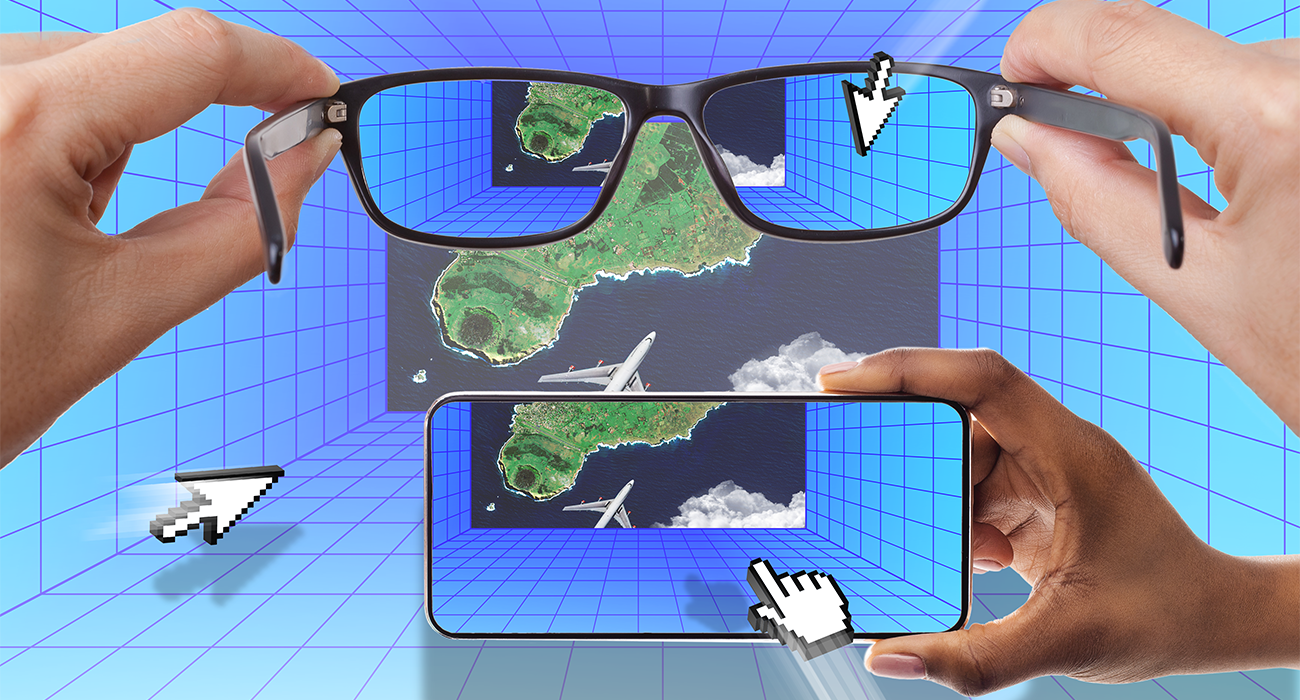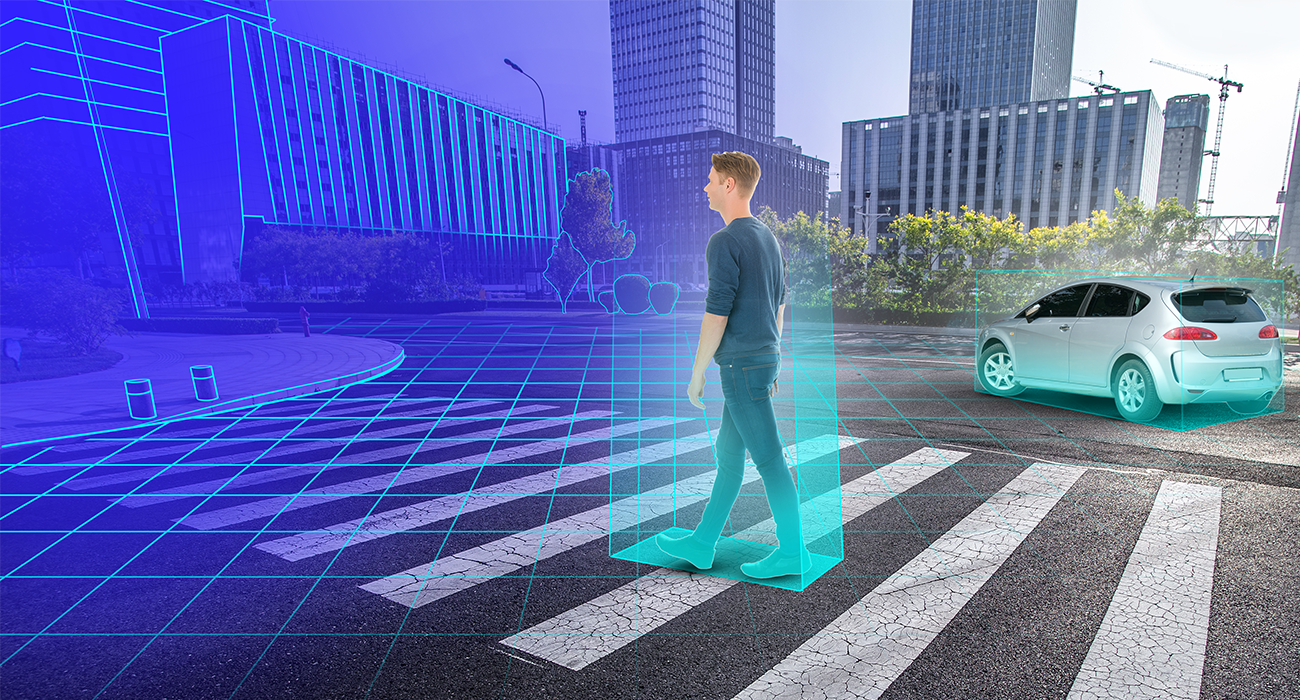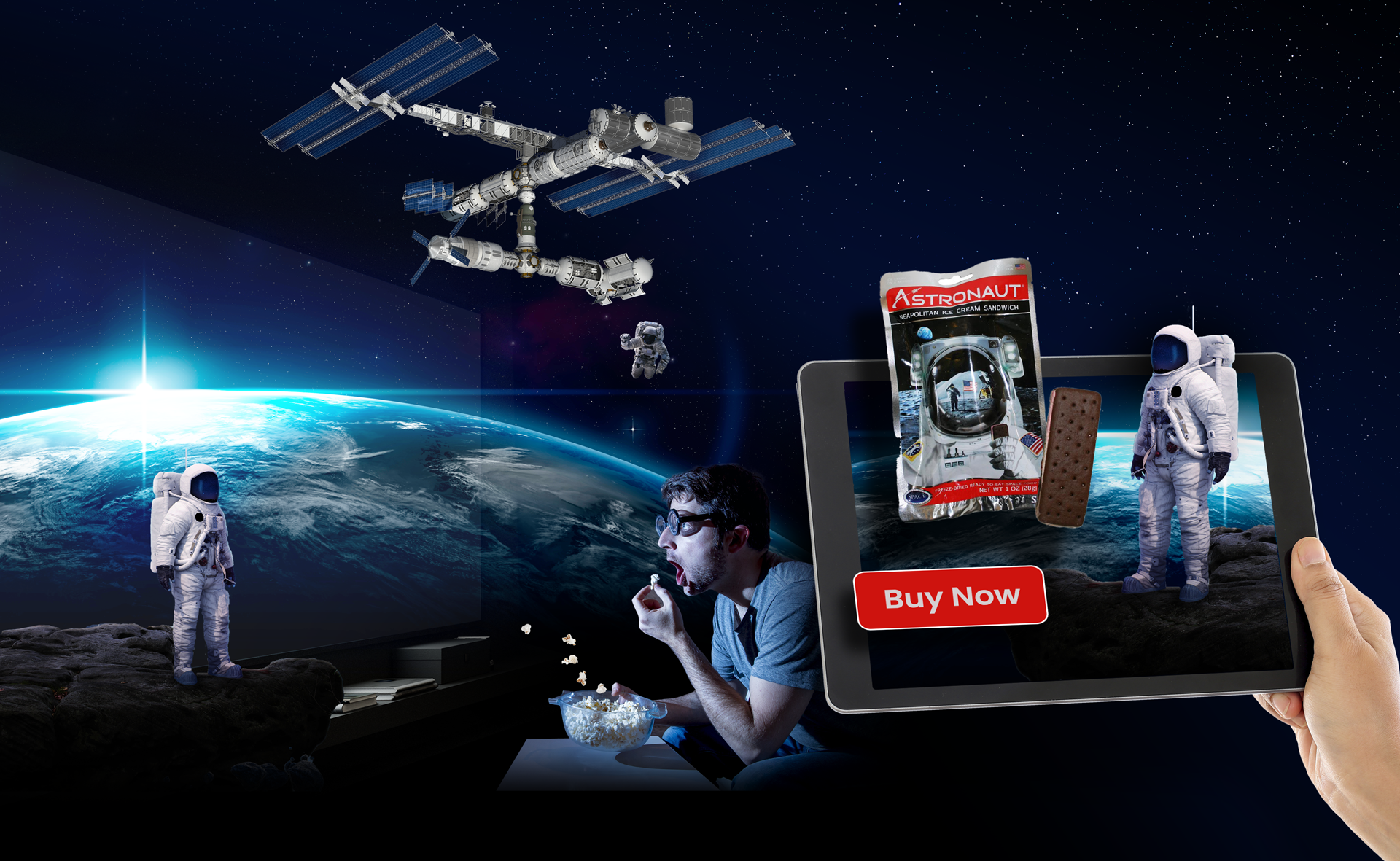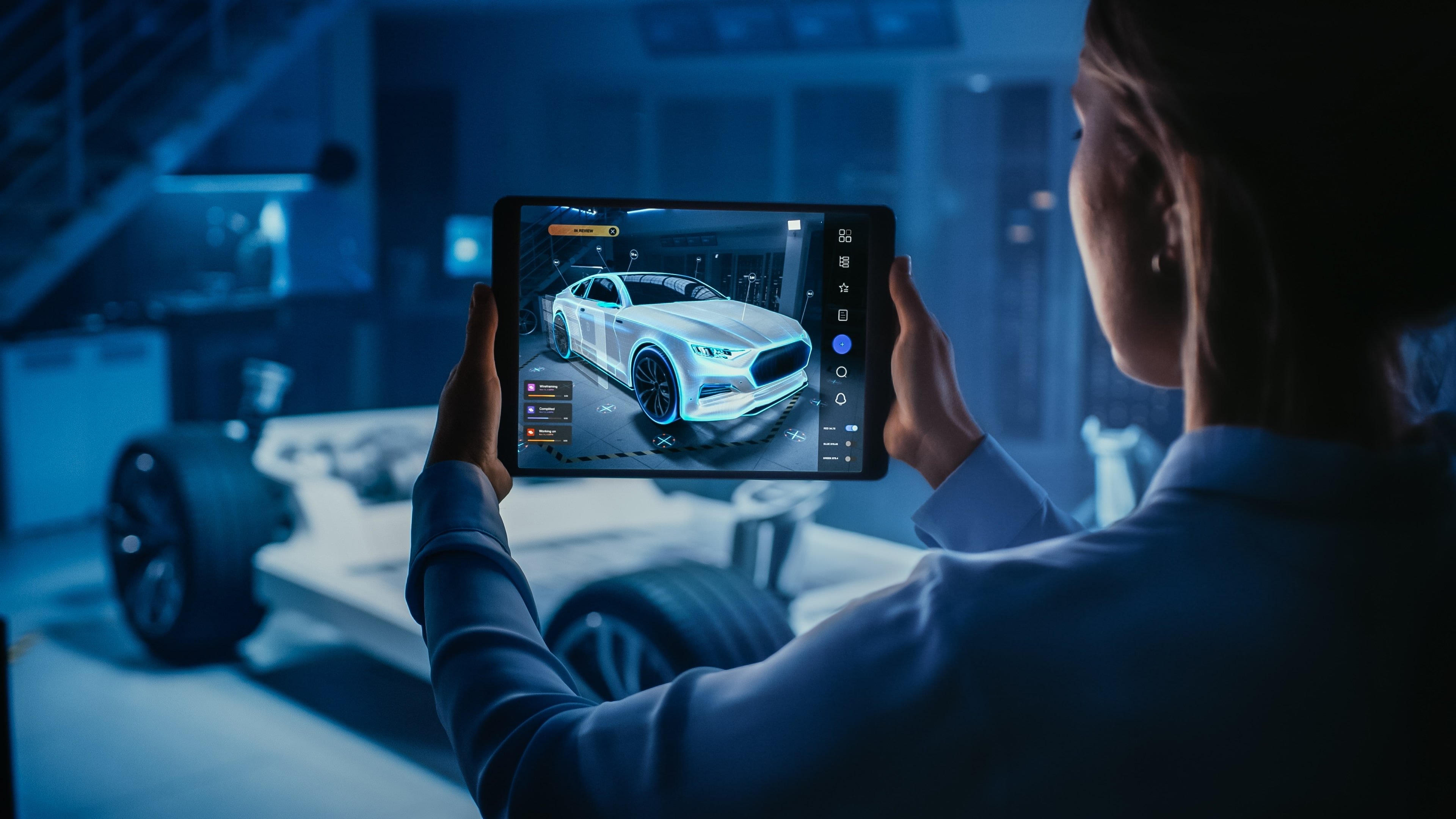Augmented Reality (AR) is a technology that has been gaining a lot of attention in recent years. It has a wide range of applications and has the potential to change the way we interact with our world. In this article, we'll explore the history, workings, applications, challenges and future of AR technology.
At a glance:
- What is Augmented Reality Technology?
- What is the History of AR?
- What are the key factors that led to the growth of AR?
- What are the Applications of AR?
- What is the Difference Between AR & VR?
- What are the Challenges of AR?
- What is the Future of AR?
- Conclusion
What is Augmented Reality Technology?
Augmented Reality (AR) technology is a type of technology that overlays digital information onto the real world, creating a hybrid environment where virtual and physical elements coexist. AR technology uses cameras, sensors, and computer vision algorithms to track the real-world environment and superimpose digital content onto it in real-time. AR can be experienced through a variety of devices, including smartphones, tablets, smart glasses, and headsets. AR technology has applications in a variety of industries, including gaming, entertainment, retail, education, and healthcare. With continued innovation and development, AR technology has the potential to transform the way we interact with the world around us.
Now that we have understood what augmented reality is, let’s understand the evolution of this technology:
What is the History of AR?
AR technology has its roots in the early 1960s when Ivan Sutherland developed the first head-mounted display system. Since then, AR technology has undergone significant development, with various forms of AR becoming available to consumers. The evolution of AR technology has led to the creation of products like Google Glass, HoloLens, and Pokémon Go.

What are the key factors that led to the growth of AR?
Augmented Reality (AR) has been around for quite some time, but it's true that it's been getting a lot more attention in recent years. Some of the key factors contributing to its growth include:
-
Mobile devices: One reason for this is the rapid advancement of technology, particularly in the area of mobile devices. With the increasing power and capabilities of smartphones and tablets, it's become much easier for developers to create AR experiences that are accessible to a wider audience. For instance, Pokémon Go broke the Guinness World Record for the highest ever revenue for a mobile game in its first month, plus four other records relating to the number of downloads. The game’s popularity gave a major boost to the AR market.
-
COVID-19: The pandemic has also played a role in the increased interest in AR. With people spending more time at home and looking for new ways to stay entertained, AR has become an appealing option. From virtual museum tours to AR games, there are a wide range of AR experiences that can be enjoyed from the comfort of one's own home. In addition to that, due to the pandemic, many companies have adopted a remote working module, and AR has provided a way for employees to collaborate and communicate in a more engaging and interactive way.
-
Immersive & Interactive experiences: Thereafter, another factor contributing to the rise of AR is the growing interest in immersive and interactive experiences across the globe. People are increasingly looking for ways to engage with digital content in a more natural and intuitive way, and AR provides an incredible way to do that. AR allows digital content to be overlaid onto the real world, creating a hybrid environment where the virtual and physical coexist. This has opened up new opportunities for businesses to engage with customers in a more interactive and engaging way.
What are the Applications of AR?
AR technology has a wide range of applications, including entertainment, education, medicine, marketing, and manufacturing. In the entertainment industry, AR is used in video games, sports broadcasts, and theme park attractions. In education, AR is used to create interactive and immersive learning experiences. In the medical industry, AR is used for training, surgical planning, and patient education. In marketing, AR is used to create engaging and interactive advertisements. In manufacturing, AR is used for product design, assembly, and quality control. Let’s understand some of its applications in brief below -
-
Augmented Reality in Business: Augmented Reality (AR) is transforming the way businesses operate by offering a new level of interactivity, engagement, and convenience. AR technology overlays digital information onto the real-world environment, providing users with a new way of experiencing and interacting with the world. In the business world, AR has numerous applications, including product visualization, employee training, marketing campaigns, and customer engagement. AR solutions can help businesses improve their customer experience, reduce costs, and increase revenue. By integrating AR technology into their operations, businesses can stay ahead of the competition and offer unique and innovative services to their customers.
-
Augmented Reality Solutions: Augmented Reality (AR) solutions are transforming various industries by providing a new level of interactivity, engagement, and convenience. AR solutions combine virtual and real-world environments, providing users with a new way of experiencing and interacting with the world. AR solutions can be used for various purposes, such as product visualization, employee training, marketing campaigns, and customer engagement. AR solutions can be integrated into mobile applications, websites, and other digital platforms, making them accessible to a wide range of users. With AR solutions, businesses can improve their customer experience, reduce costs, and increase revenue.
-
Augmented Reality in Manufacturing industry: Augmented Reality (AR) has several applications in the manufacturing industry too. It can be used to guide technicians through maintenance and repair procedures, providing real-time instructions and visual aids. AR can also assist in complex assembly procedures, ensuring accuracy and efficiency while aiding in quality control by quickly identifying defects and allowing for immediate adjustments. Additionally, AR can be used for immersive training experiences for workers, providing a safe and controlled environment to practice procedures and processes. Finally, AR can help designers visualize and test new products in real-world environments, allowing for adjustments before manufacturing begins. As a result, AR has the potential to significantly improve efficiency, productivity, and safety in the manufacturing industry, making it an increasingly popular technology for companies looking to stay competitive.

What is the Difference Between AR & VR?
Augmented Reality (AR) and Virtual Reality (VR) are often mentioned together, but they are different technologies. VR technology creates a completely immersive experience, while AR technology enhances the real world with virtual elements. AR technology has the advantage of not requiring a separate physical space, as VR does, which makes it more accessible and versatile.
Seeing the rapid changes that are happening in the field of technology, most of us have questions about whether we should invest in this field or not. The next section might provide you with clarity regarding this.

What are the Challenges of AR?
While Augmented Reality (AR) technology has seen significant growth and development, there are still several challenges that need to be addressed in order to fully realize its potential. Some of the key challenges of AR include:
-
Technical limitations: AR technology is still limited by the processing power and battery life of mobile devices, which can impact its performance and usability.
-
User experience: AR experiences can be difficult to use and navigate, particularly for first-time users. Improving the user experience and making AR more intuitive and user-friendly is a key challenge.
-
Content creation: Creating high-quality AR content can be a complex and time-consuming process, requiring specialized skills and expertise.
-
Standards and interoperability: There is a lack of standardization in the AR industry, which can make it difficult for different AR systems to work together and for content to be shared across platforms.
-
Privacy and security: AR technology has the potential to collect and transmit sensitive information, raising concerns around privacy and security.
Overall, while AR holds significant promise, addressing these challenges will be critical to realizing its full potential and enabling it to become a more mainstream technology.
What is the Future of AR?
The potential for AR technology is vast, and it's likely that we'll see significant developments in the coming years. Market projections estimate that the AR market will reach $198 billion by 2025. AR technology has the potential to change the way we interact with our world, and we can see new applications in areas such as retail, travel, and social media to name a few. With continued investment and development, AR surely has the potential to become a mainstream technology that is widely used and accessible to everyone.
Conclusion
In conclusion, we’ve gained a thorough understanding of what augmented reality is. AR technology has come a long way since its early beginnings, and its potential for the future is exciting. As AR technology becomes more prevalent, it's important for us to consider the ethical, legal, and technical challenges that come with it. AR technology has the potential to enhance our lives in ways we can't yet imagine, and it's up to us to use it in a responsible and beneficial way. To know more about AR and related topics click here
About Nextech3D.ai
Nextech3D.ai is a diversified augmented reality, AI technology company that leverages proprietary artificial intelligence (AI) to create 3D experiences for the metaverse. Our main businesses are creating 3D WebAR photorealistic models for the Prime Ecommerce Marketplace as well as many other online retailers. Connect with us today, and let’s grow your business together! Talk to an expert now!







